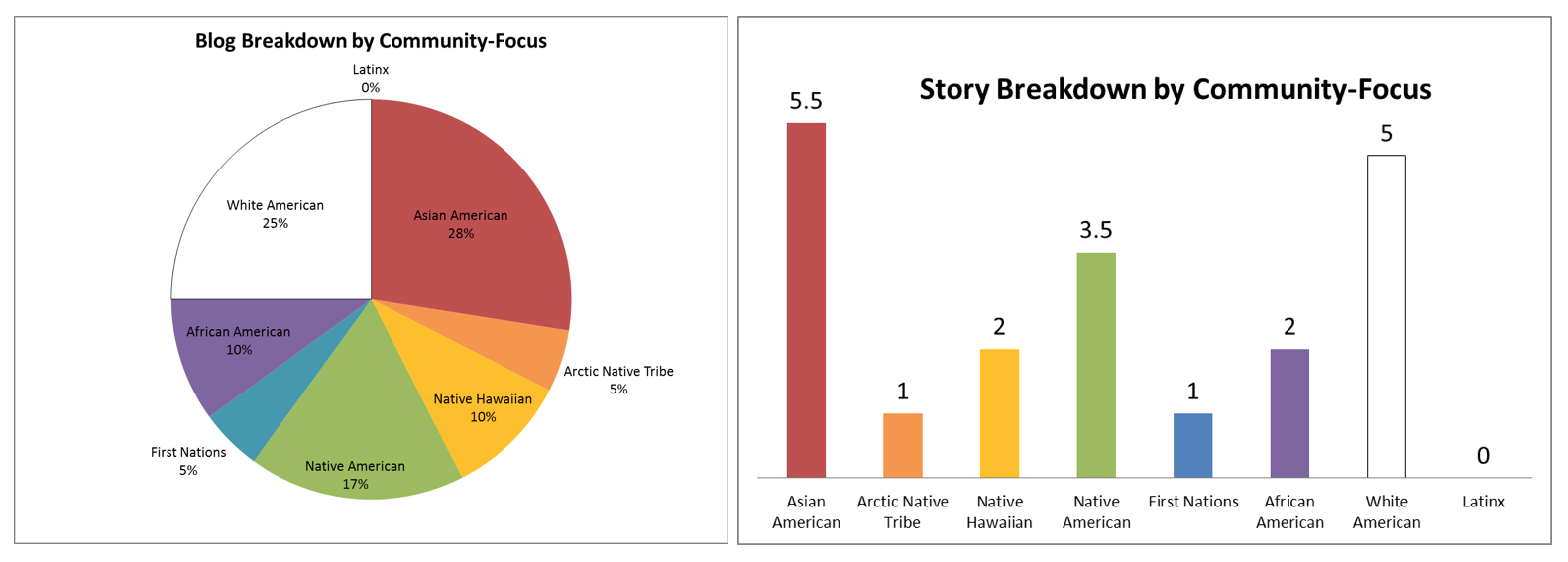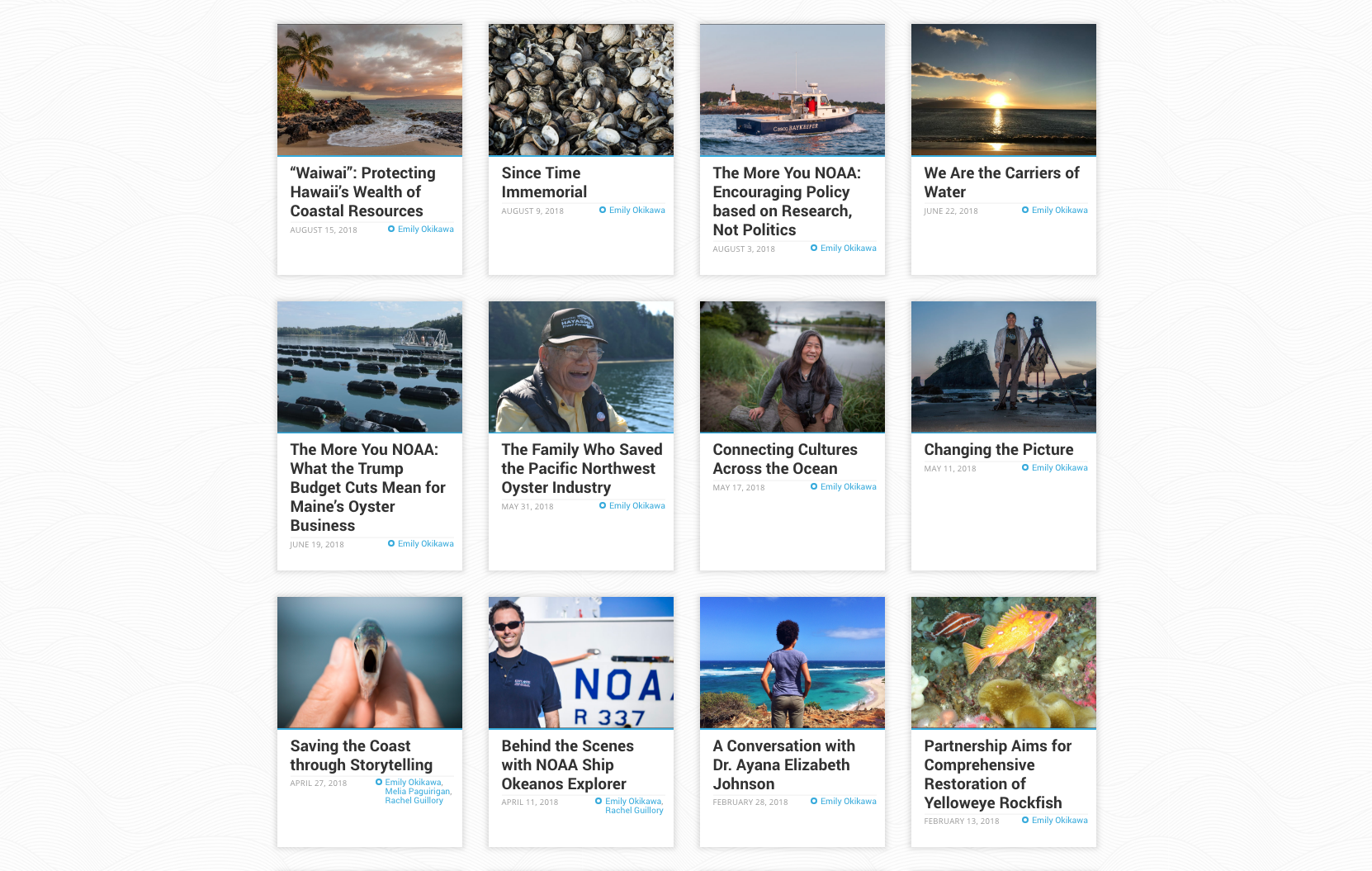Telling Stories of Our Ocean Champions
Published by Ocean Conservancy
As I wind down my tenure as a Roger Arliner Young Marine Conservation Diversity Fellow at Ocean Conservancy, I can’t help but feel conflicted about leaving a place that has supported my growth as a recent graduate, storyteller and environmental activist as well as cautiously excited for what’s next.
Over the past year, it was my privilege to speak to community leaders engaged in marine conservation from Alaska to Louisiana, from Florida to Washington State. Contrary to the damaging myth that people of color don’t care about the environment, they embodied a fierce passion for environmental justice and a deep-rooted commitment to our ocean.
I wanted to take a moment and reflect on the shared ocean narrative I was tasked to build and do a blog breakdown analysis of those stories. This exercise was inspired by a recent NPR internal analysis that examined the diversity of the outside sources featured on NPR’s weekday radio programs.
Here’s what I learned


The first thing I noticed was that I did not have a single blog focusing on Latinx communities, which was a significant oversight on my part. Conversely, the prominence of the Asian American category highlights my inherent bias. The analysis has also made me more aware of the type of Asian-American stories I’m telling, and the importance of ensuring Southeast, South and Central Asians are also fairly represented instead of letting East Asian voices dominate the conversation. The White American category is also high as a result of project where I was assigned specific people to interview.
This analysis revealed the importance of looking at data as a whole to identify bias and encourage accountability. Had I analyzed my blogs earlier, I would’ve noticed the lack of Latinx representation and prioritized cultivating connections in the community. These results serve as a reminder that these stories are out there, we just need to do a better job of bringing them forward.
One of the questions I get asked most often is: How do I highlight stories without co-opting them?
Here are three things to keep in mind.
1. Our role in the story
Let’s start with an easy question: Are you part of the story?
Co-opting a story means appropriating someone else’s narrative to use for our own gain or profit.
Before I start writing, I take the time to examine the story to clearly outline if/how my organization worked with these communities in an equitable partnership. Don’t force the hero or savior frame on a story. All too many stories involving communities of color, indigenous communities and disenfranchised communities are framed by the white-savior trope.
Ask for and then reflect honestly the voices of those who give you their time, words and wisdom.
2. Understand the context
In my blog about the Suquamish Tribe, I wrote: “Understanding our current situation relies on our acknowledgement of our past. The environmental legacy of the United States is inextricable from the social justice movement and a history mired in enduring inequality.”
Before an interview, the most important thing you can invest in is research, so please, do your homework. We can’t expect communities to give us a crash course in their entire history—we should not oblige them to undertake the emotional and intellectual labor of educating us.
Instead, take the time to understand the historical context that informs the story—what are the political, economic and cultural drivers that created the situation? Educating ourselves and acknowledging our complicity in upholding a system of oppression woven throughout our (environmental) history is integral to acknowledging intersectionality and forming comprehensive solutions.
3. Transparency & open communication
I always attempt to be 100% transparent when I reach out to a community for insight into a piece that I’m writing.
To build trust, I always explain who I am, who I work for, the story that I’m writing, why I want to talk to them specifically and how the final piece will be used. I also make it explicitly clear that I am here to listen to their perspective and the narrative they want to tell. Before the piece is published, I always give them the final draft to let me know if I made any errors or mischaracterized their words in any way.
This open communication has not only allowed me to have incredibly insightful conversations with environmental leaders from around the country, but has allowed me to form lasting and genuine relationships with them.
When it comes to telling true stories of our ocean champions, our collective ocean narrative is stronger and more compelling when every voice has a chance to share.
It was an immense honor to develop community-based storytelling as a Roger Arliner Young Marine Diversity Conservation Fellow here at Ocean Conservancy.
Thank you for being part of my journey.
Please stay connected! To follow along on my writing journey, find me on Twitter!
Sign up for our emails!
The post Telling Stories of Our Ocean Champions appeared first on Ocean Conservancy.
Read the full article at: https://oceanconservancy.org/blog/2018/08/16/telling-stories-ocean-champions/



